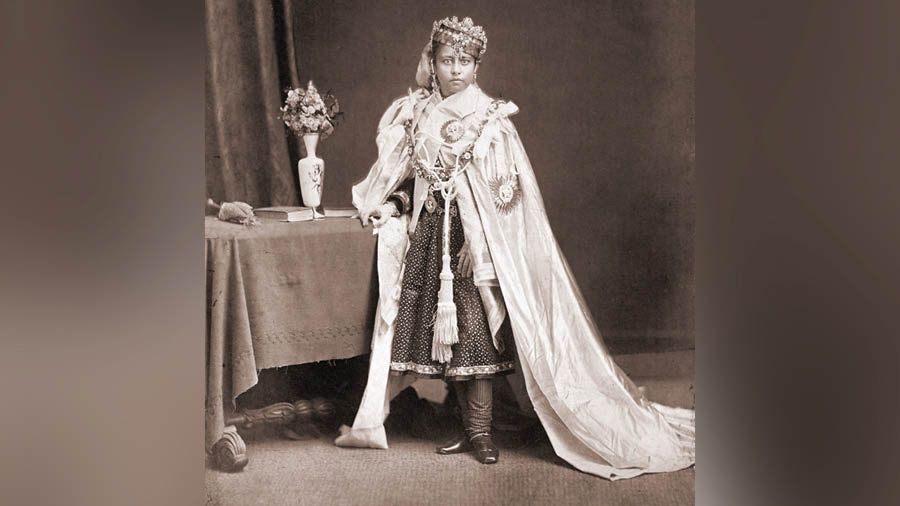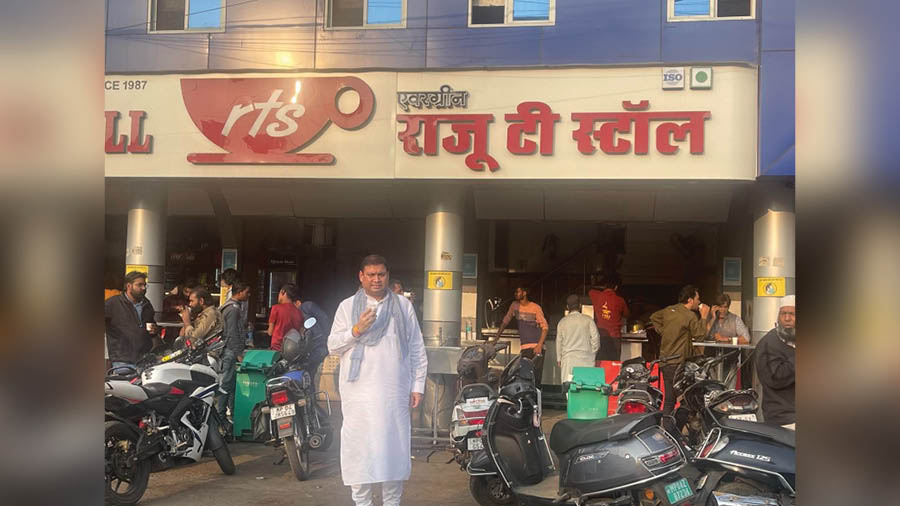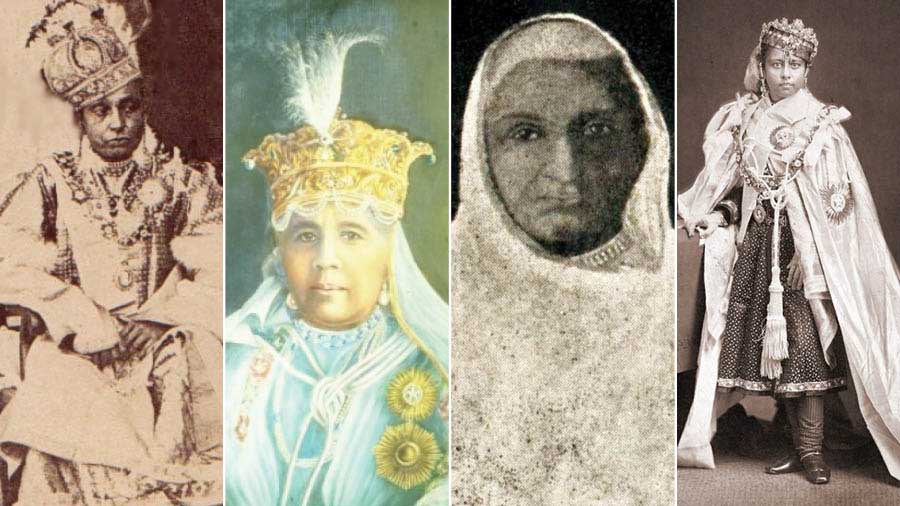It was my first trip to Bhopal, the capital city of the country’s cleanest state in the heart of India.
The main reason I was in Bhopal was to attend ‘The Wedding’, where battle lines within and across political parties were blurred by the politicians in attendance, along with actors, music directors, poets and members of royal families.
The Kolkata connection? The groom happened to be the second boy from our city to be married into one of the most influential families in the country, based out of Bhopal.
Reaching Bhopal from Kolkata is not easy, as there is no direct connectivity by air, and so many guests were flown in by charter flights from Delhi, Kolkata and Mumbai.
A sophisticated hamper greeted us with an enticing note introducing Bhopal. The note said:
Bhopal, initially named as ‘Bhojpal’ after the kind Parmara king Bhoj and the term ‘pal’, means ‘dam’ as this ruler created several dams surrounding the numerous lakes that are still present in the city.
The city of Bhopal saw its golden period during the rule of the Muslim queens, more popularly called the ‘Begums’. The height of the arts, public works, culture and architecture were astonishingly high during the rule of the ladies in this city. The begums gave the city all the important things including the postal system, railways, municipality, and the waterworks.
Taj-ul-Masjid (Crown among Mosques), in Bhopal, is not only the largest mosque in India but is the second biggest in Asia. Here you can also discover India's only functional Turkish bath — a 300-year-old Qadimi hammam.)
In fact, Bhopal is also referred to as the ‘Begamo ka Shahar’, so profound was their influence on life in the city. There were four begums who once ruled this region. Bhopal, in central India, has a rich history. In the 10th andthe11th centuries, when the Parmars of Dhara ruled the place.

Statue of Raja Bhoj in Upper Lake in Bhopal Shutterstock
Raja Bhojdev Parmar (1010-1055) built a huge dam across the Kolans River in Bhopal, thus creating a lake enabling Bhopal’s urbanisation. A dam is called pal in the local language. Hence, the city came to be known as Bhojpal — the dam of Bhoj.
Following the decline of the Parmars, Bhopal went into the hands of a Gond tribal dynasty. When Mughals ruled in Delhi, this region was under the control of Sangram Shah, the Gond ruler of Garha-Mandla. After Emperor Aurangzeb died in 1707, one of his generals, Dost Mohammad, succeeded in establishing Muslim rule in Bhopal by dethroning Rani Kamlapati, the Gond ruler of Bhopal at that time. He then became the first Nawab of Bhopal and his descendants continued to hold sway through many twists and turns.
The Begums, who made striking contributions to the life of the city, appeared on the scene almost a century later.
Nazar Mohammad Khan (Rule: 1816-1819), one of Dost Mohammad’s descendents, married Qudsia Begum alias Gauhar Begum in 1818. Their relationship was less than cordial. In 1819, there was a burst of gunfire in the nearby Palace of Islamnagar and Nazar Mohammad died under mysterious circumstances. According to his will, his daughter, Sikandar Jahan Begum, was to be the next Nawab of Bhopal. But she was only six months old at that time. Hence, Gauhar Begum took charge as the Nawab.
The Famous Four Begums
Qudsia or Gauhar Begum (Reign: 1819-1837)

Gauhar Begum Wikimedia Commons
Gauhar Begum led a simple life and was the most popular Nawab of Bhopal. She was awarded the Imperial Cross during the Imperial Assemblage, in Delhi, in 1877. She built the Gauhar Mahal on the banks of the Bada Talaab in Bhopal. At present, the Handicrafts Development Corporation organises fairs at this place. Gauhar Begum died in 1881. Her unpaved grave is in Bada Bagh.
Sikandar Jahan (Reign: 1844-1868)

Sikandar Begum of Bhopal Wikimedia Commons
She was the daughter of Gauhar Begum, who passed several laws and established districts, tehsils and police stations. She also created an administration department. She opened the Madarsa Sulemani and the Victoria School. She went to Delhi in 1862, where she saw the Jama Masjid and then built the Moti Masjid in Bhopal. Palaces like the Sheesh Mahal, Zeenat Mahal, Shaukat Mahal and Moti Mahal were built around Bhopal’s Khirni Maidan during her reign.
The First Freedom Struggle of 1857 was fought during her time. Sikandar Jahan extended full support to the British. She hid the British soldiers in her palace. One hundred and fifty-seven freedom fighters were hanged at the gate of Rahatgarh Fort. So people began to call her Khooni Begum.
Sikandar Begum, along with the British Government, had got a law passed stating that, if a son was not born to her descendants, their daughters would become the Nawab of the princely state.
Shah Jahan (Reign: 1868-1901)

Shah Jahan Begum Wikimedia Commons
Sikandar Begum’s daughter Shah Jahan built another city nearby, Shahjahanabad, which was fortified by walls with seven entrances. She had built a Taj Mahal for herself, 12 palaces for her ministers, and several orphanages, old-age homes and Waqf offices. She also built several schools. For the economic well-being of Muslim women, she constructed an exclusive market, Pari Bazar. The Pari Bazar building was recently demolished under the smart city project.
Shah Jahan Begum toured the entire princely state and carried out several reforms. She introduced a postal system in 1882 and appointed a doctor in every locality. In 1876, criminal and civil laws were framed and published. Approximately Rs 5,0000 was spent to build the Hoshangabad-Bhopal railway line. In 1878, a Madarsa was built, and hospitals were established in the names of the Duke of Edinburgh and the Prince of Wales. In 1894, the Lady Lansdowne Maternity Hospital was constructed. Silver coins were issued during Shah Jahan Begum’s reign. She started three printing presses, namely, Sikandar Press, Sultania Press and Shah Jahan Press. Lord Lansdowne, Lord Elgin and Lord Curzon visited Bhopal while she was the Nawab. She died of cancer in 1901.
Sultan Jahan (Reign: 1901–1926)

Sultan Jahan of Bhopal Wikimedia Commons
She was Shah Jahan Begum’s only child. During her reign, plague broke out in her state in 1912. In 1910, she went to Allahabad and donated One rupee to Prince Agha Khan for the Mohammedan University. She also inaugurated the Aligarh Girls’ School in 1915. She built the Sultan Manzil in Aligarh. When Aligarh University was formed, Sultan Jahan Begum became its first Chancellor. She authored several books such as Tuzke Sultani, Gauhar Iqbal, Akhtar Iqbal, Hayate Qudsi, Hayate Shahjahani, Khutwate Sultani, Tajkarabaki, Hayate Sikandari, Falsafaye Akhlaq, Baghe Ajab, Hidayate Timardari and Umre Khandani.
The Begum also built the Sadar Mandir. She built Bagh Farhat Afza, Ahmedabad Palace (Qaser-e-Sultani) on Ziauddin Tekri. Between Shahjahanabad and Ahmedabad, she built the General Court, Revenue Court, Hamidia Library, Four Bungalows and Minto Hall and the Albert Museum. She died in 1930.
While in Bhopal...

Sundeep Bhutoria with a cuppa at Raju’s tea stall in Bhopal
While in Bhopal, I formally wanted to launch the activities of Prabha Khaitan Foundation in the city. Bhopal is suffused with a sense of literature and the arts, a tradition stretching from the days of the Nawabs to today’s Bharat Bhawan. I met several artists at a get-together over tea and another group of prominent city residents at a dinner organised by our associates from Indore.
If you are ever in Bhopal, try the local poha and visit Raju’s tea stall. Also, be sure not to miss the framed currency note, signed by former RBI governor Bimal Jalan, hanging on the stall’s wall.
If time permits, take a walk at `Sair Sapata’, Bhopal’s tourism and entertainment complex on the banks of the upper lakes.
As you drive to the city from the airport, you will see how neat artworks adorn the city walls and even the stone structures on which trees and bushes are planted. There is so much love for art and artists in everything you see there! Even the gift box we got at the wedding had a painting by the famous Padma Award winner, Bhajju Shyam, a renowned Gond artist.
Evidently, the legacy of the Begums lives on.
